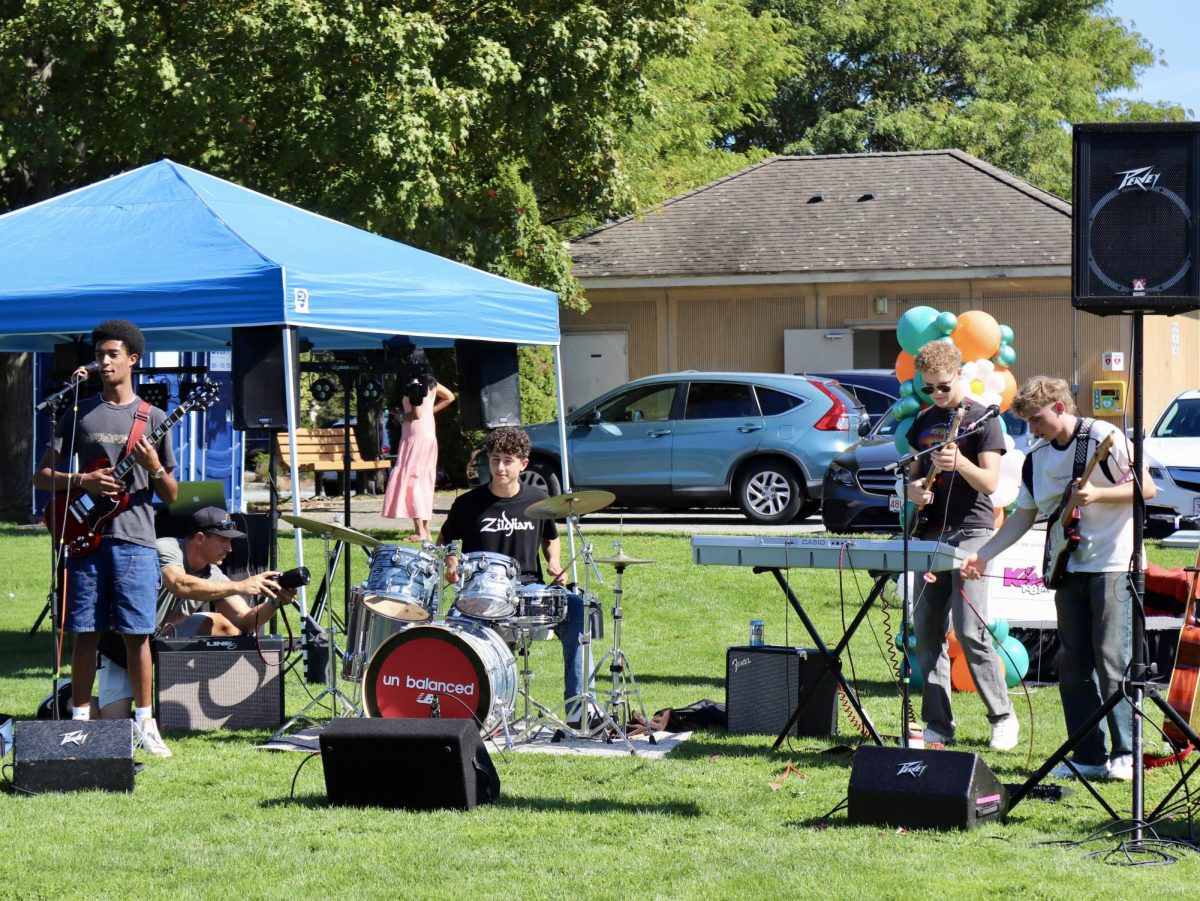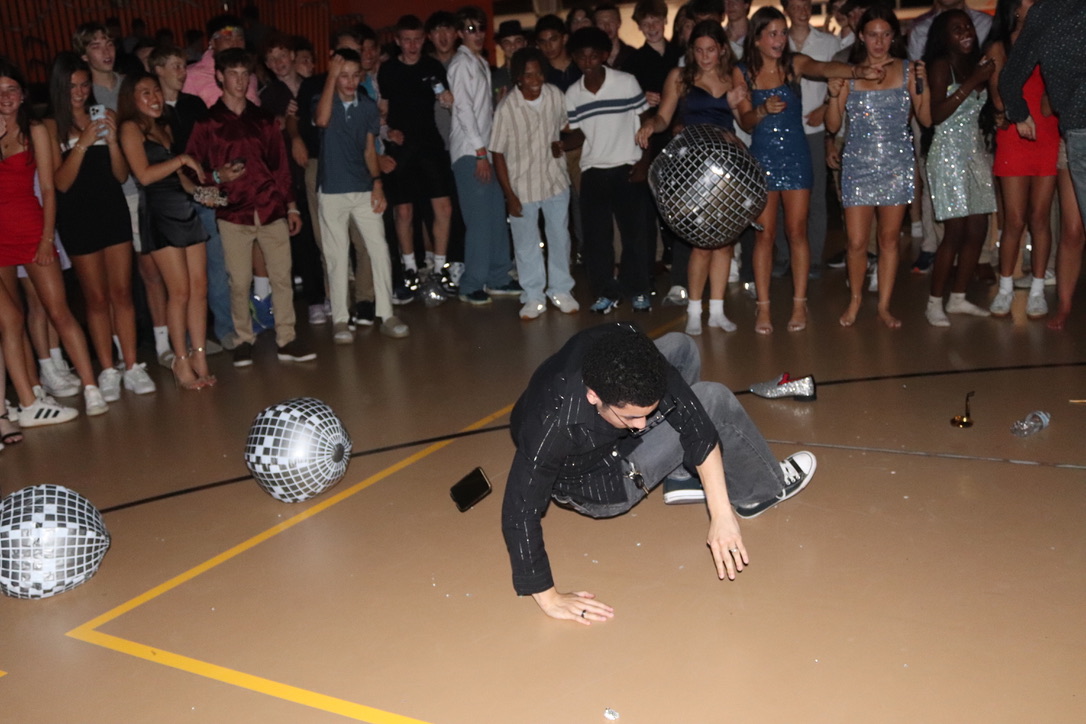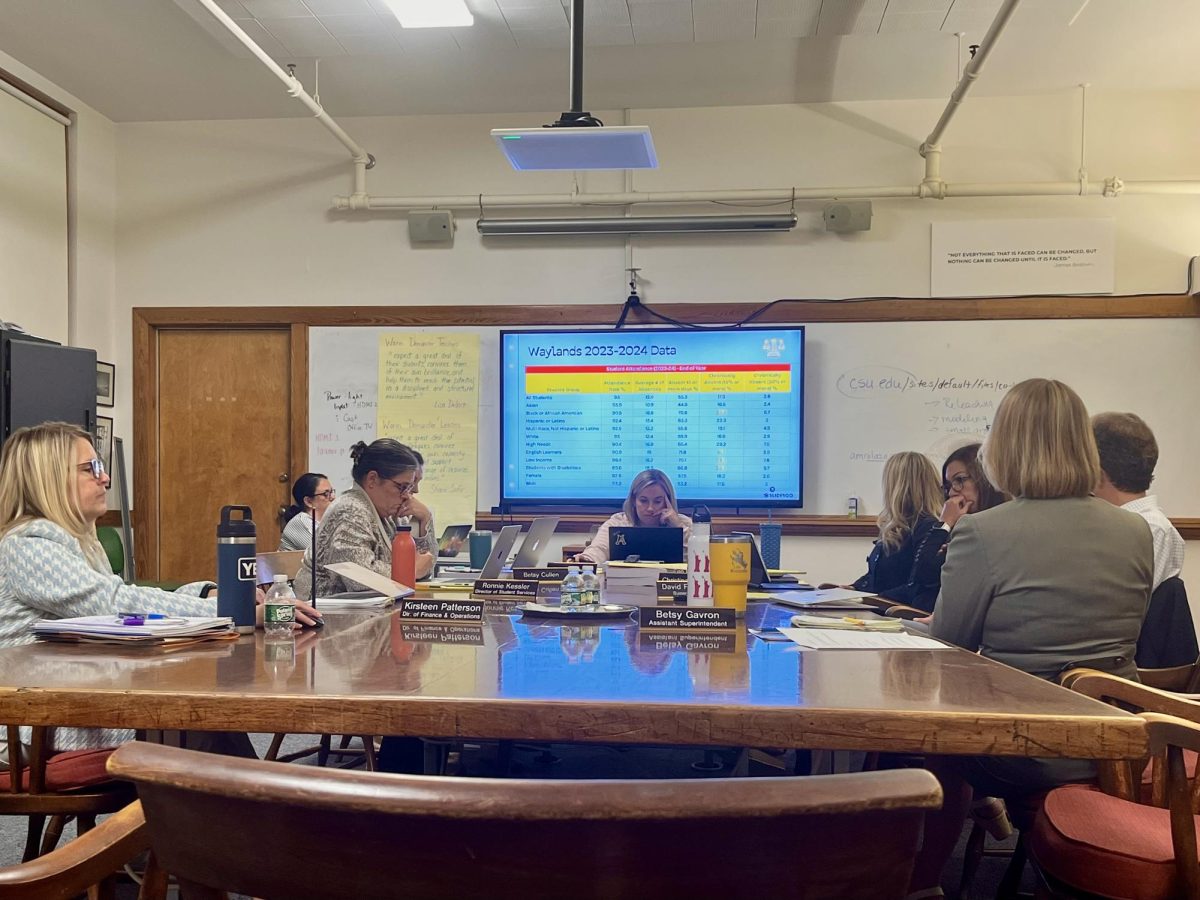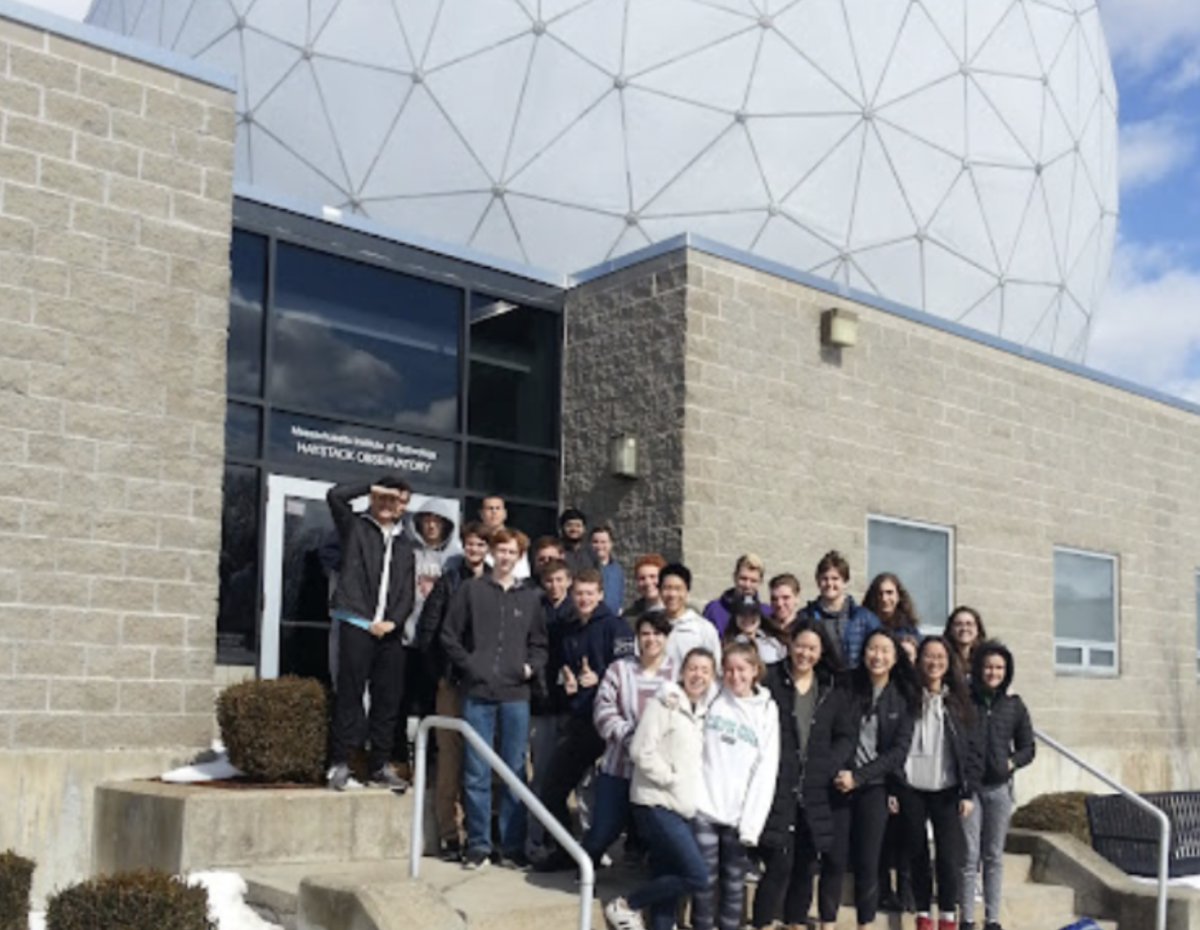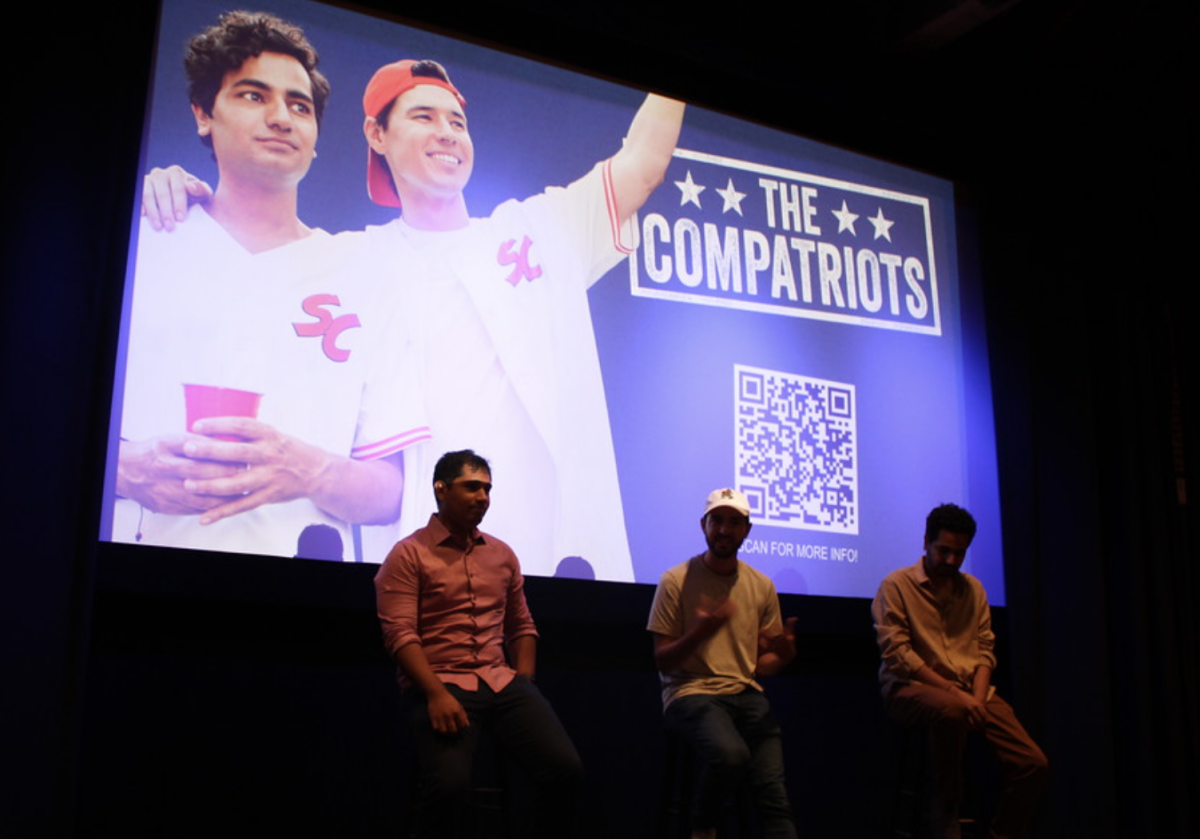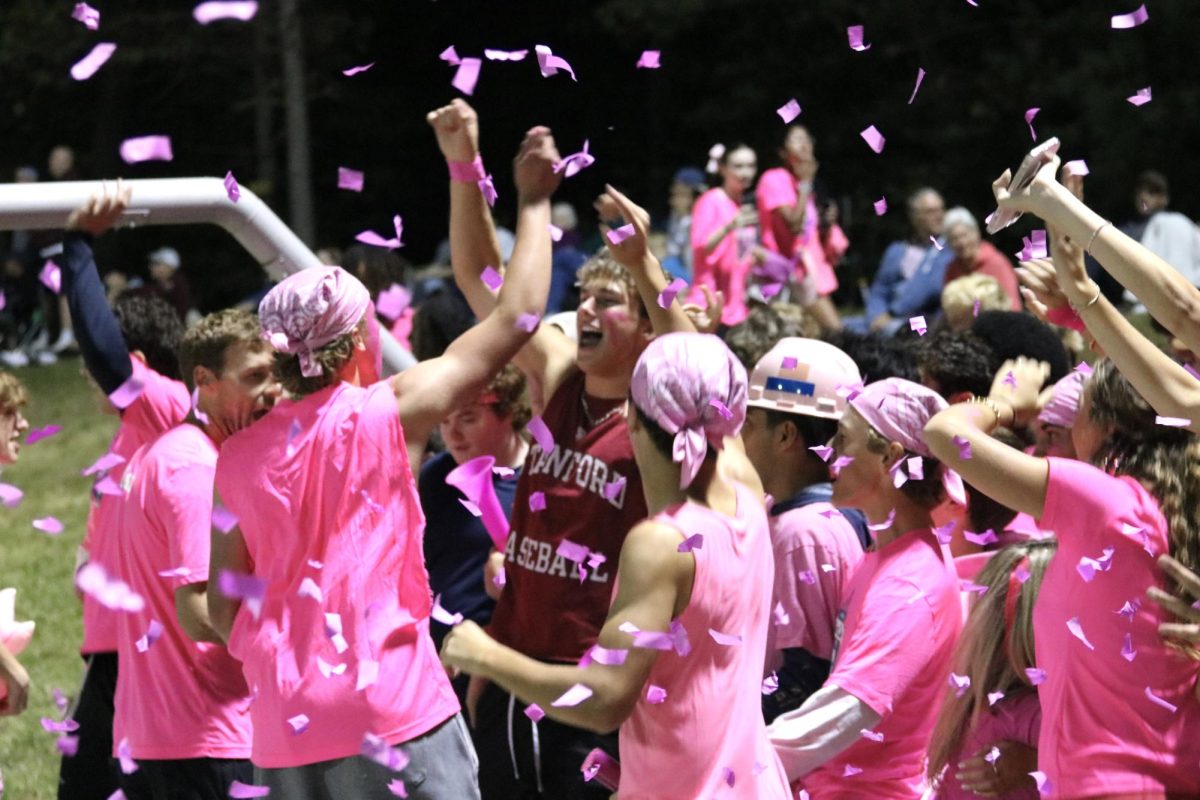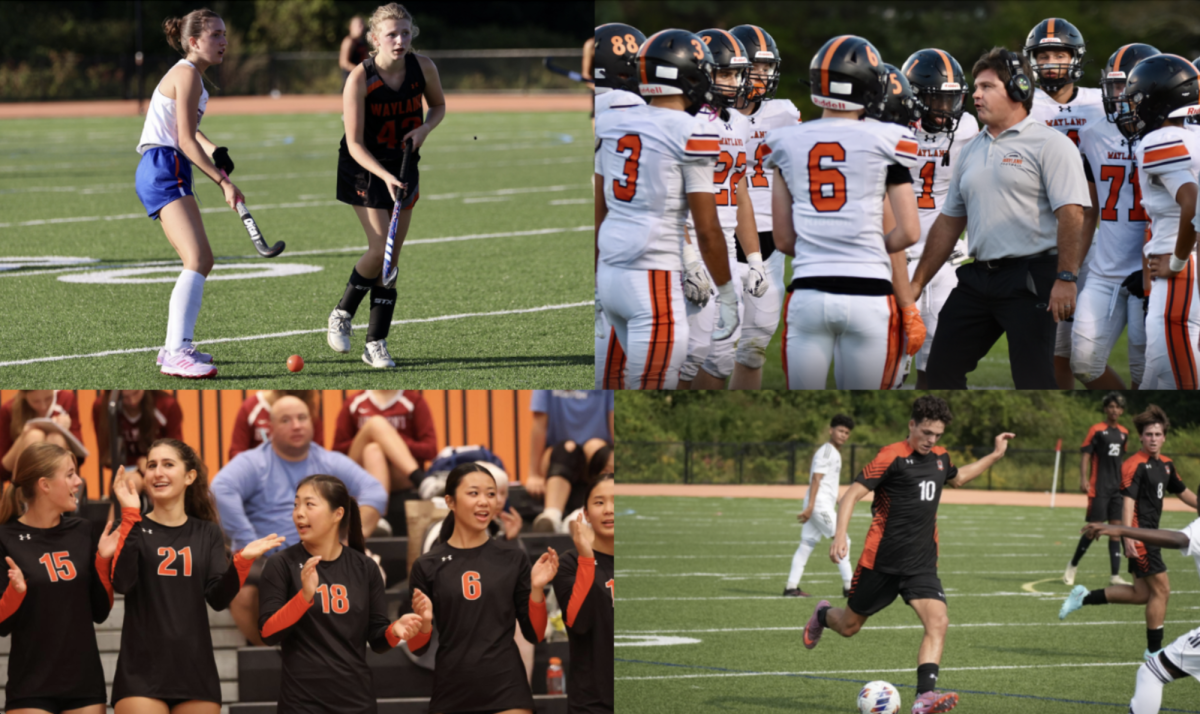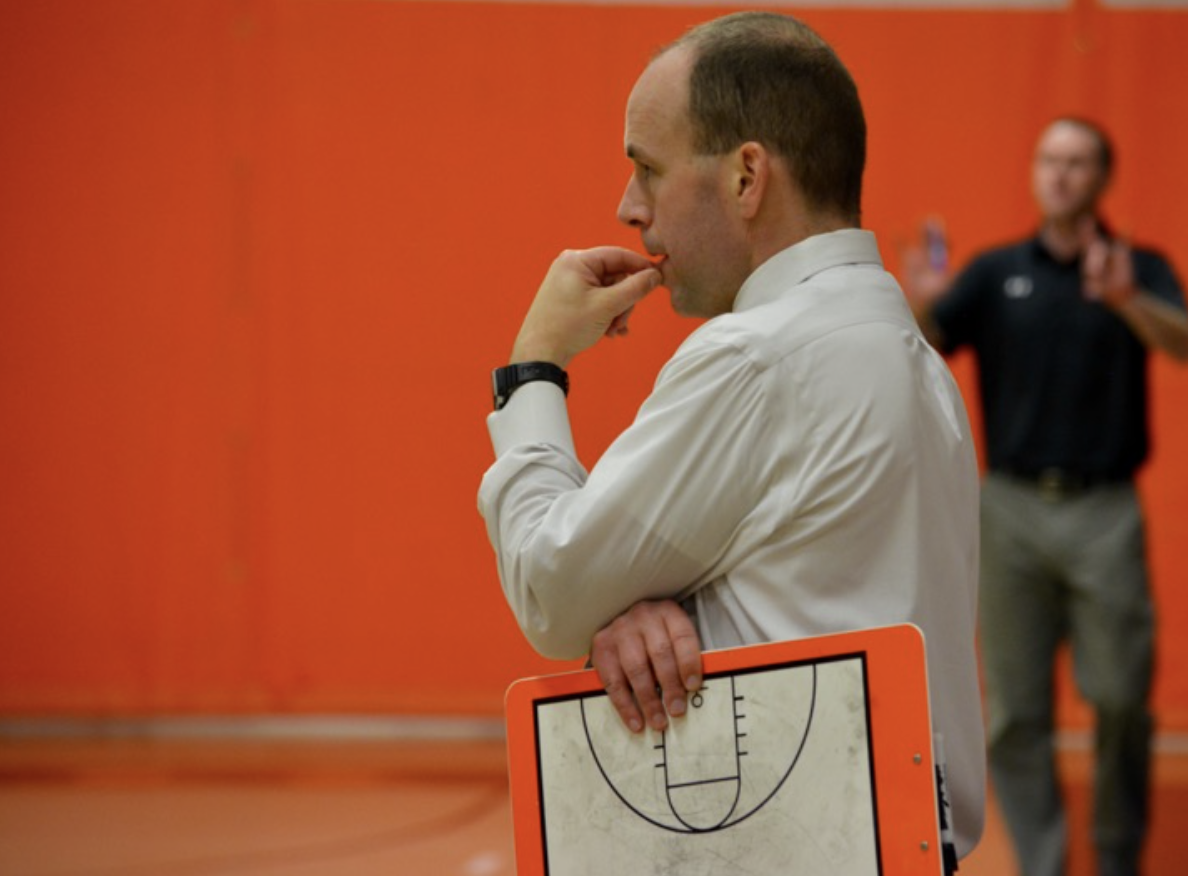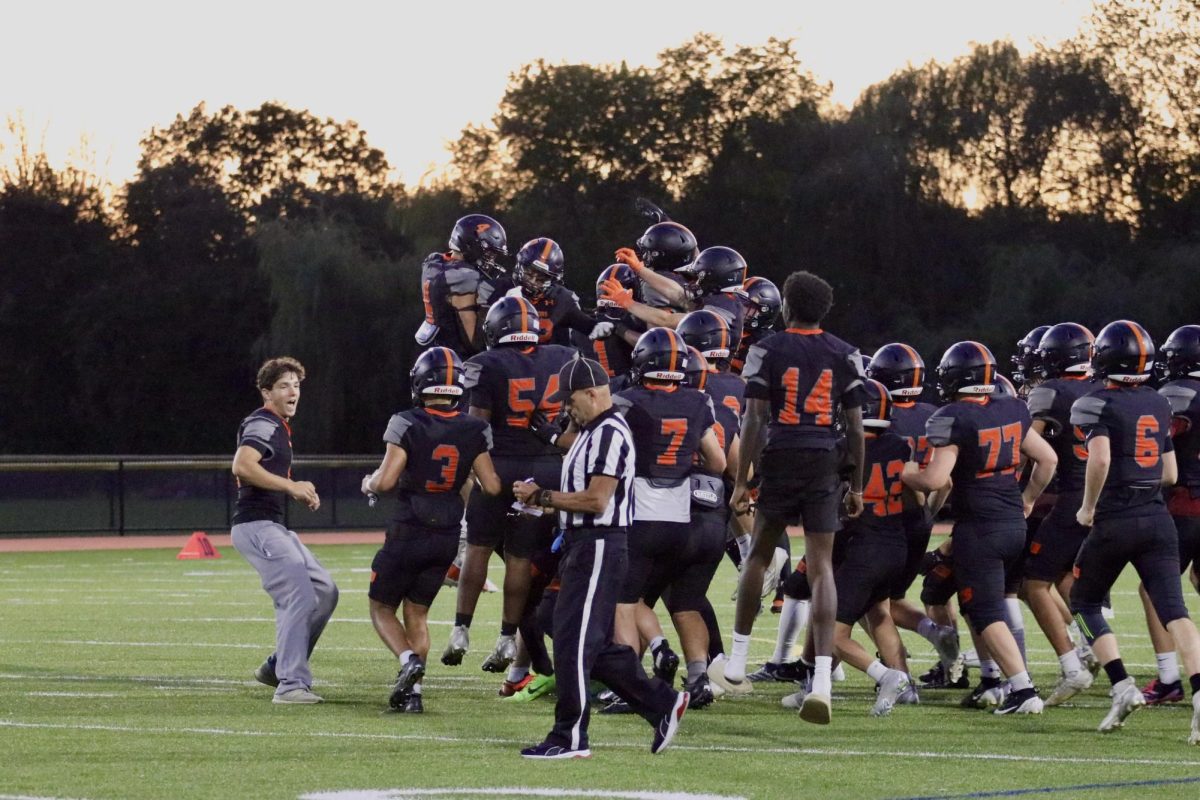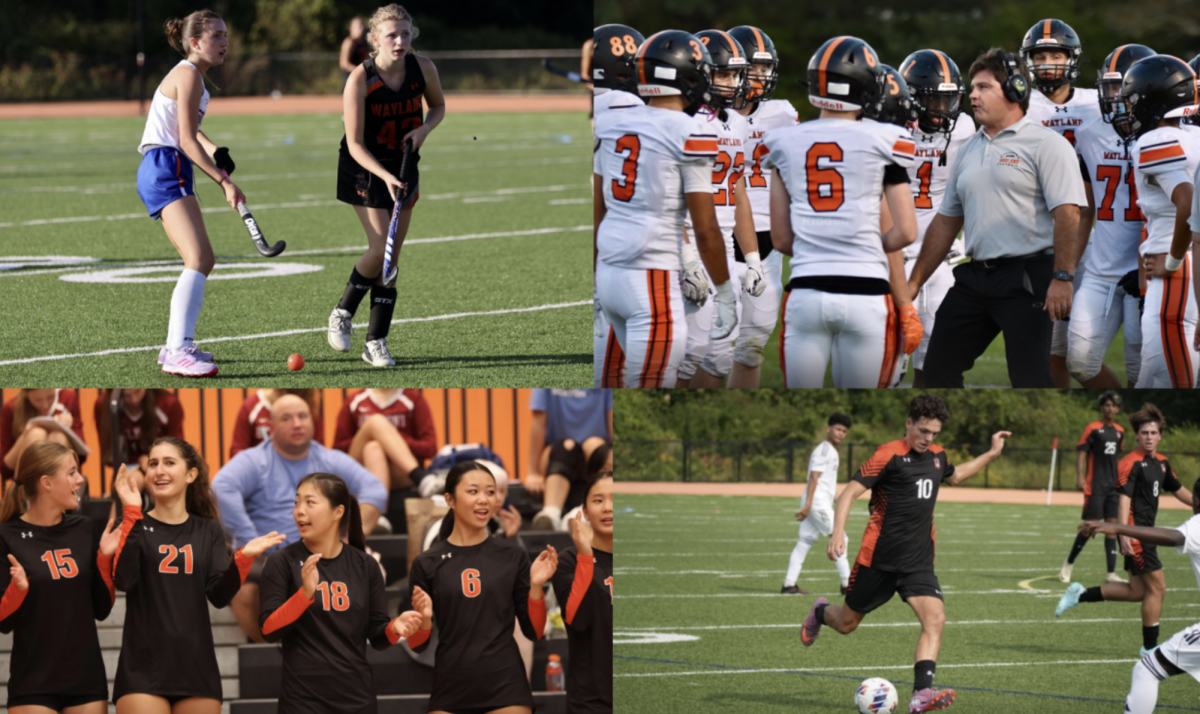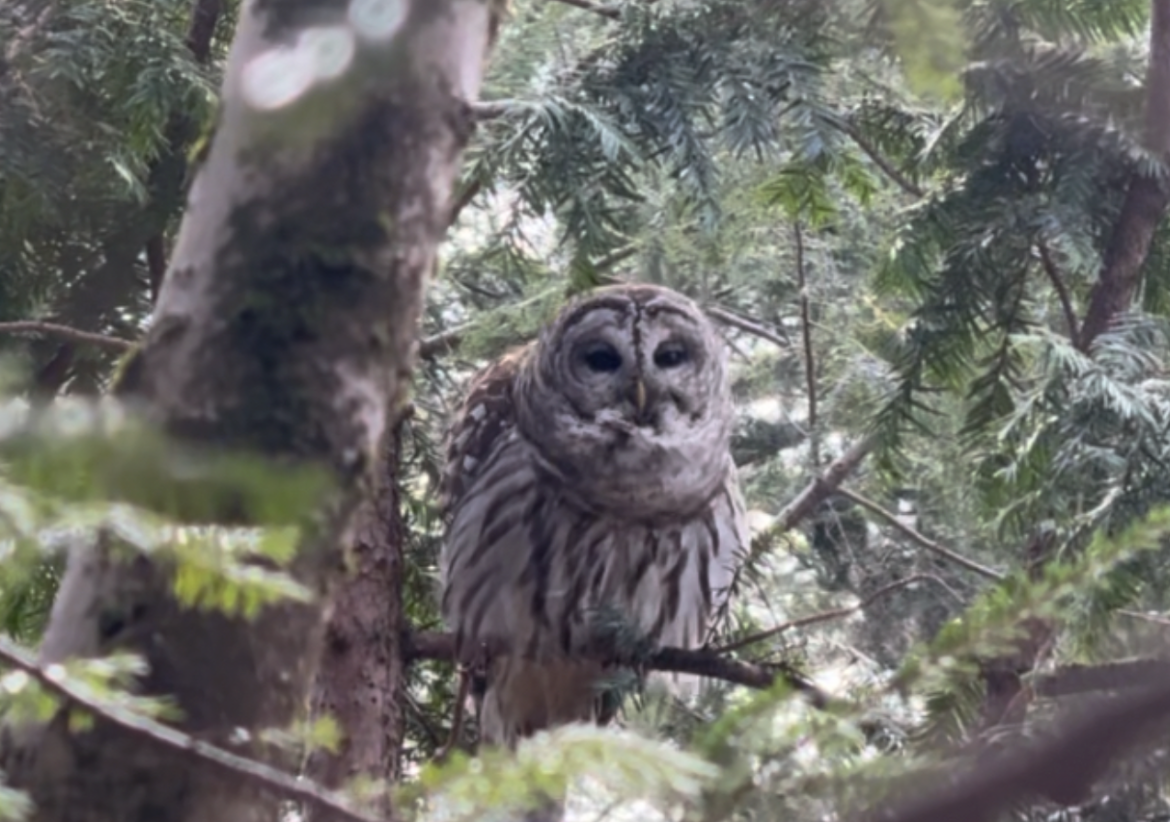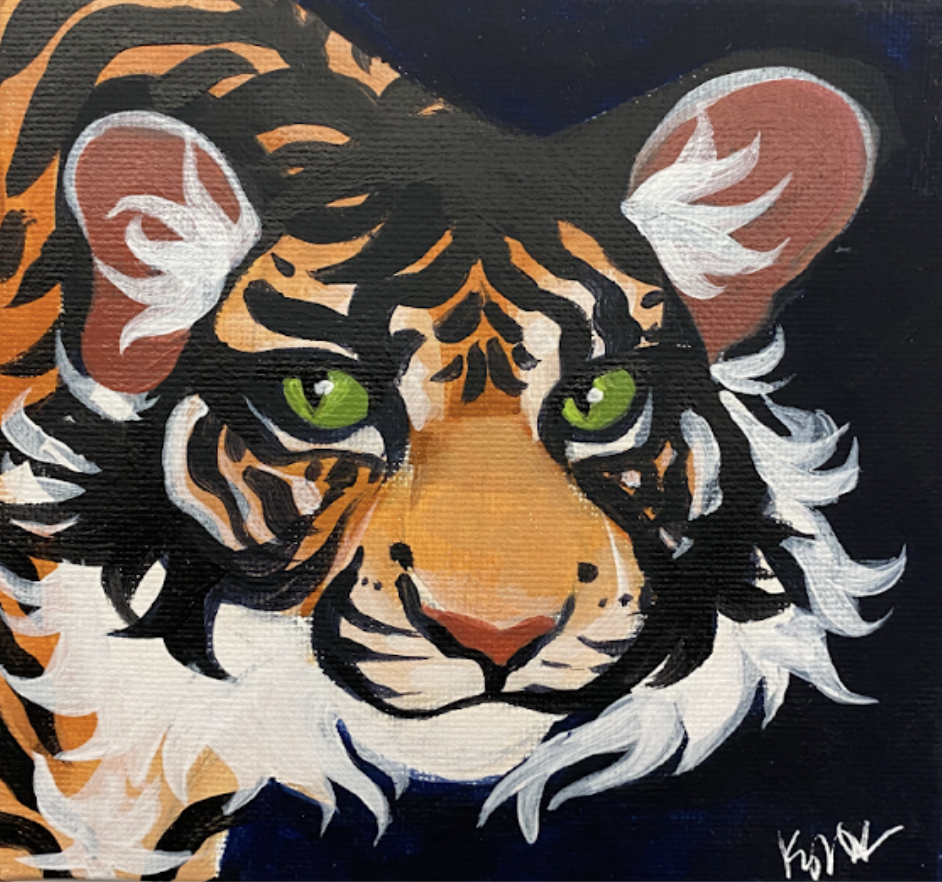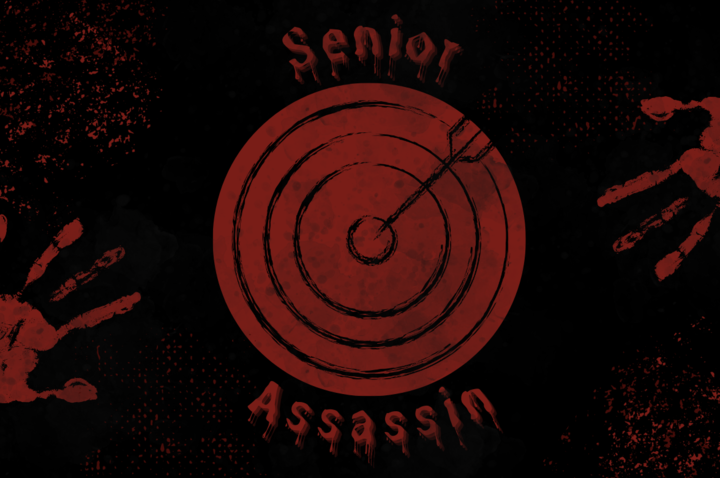Have you ever wondered how the Earth stays in orbit? Which star you’re looking up at? How the universe might end? Wayland High School offers a year-long course that answers just that. And, the course throws in nighttime telescope presentations too.
College and honors astronomy is a science elective offered to seniors at WHS and meets during period 3. Taught by Physics Teacher Kenneth Rideout, the class tackles complex existential questions about the past, present and future of the universe. Units range from the nature of orbits to theories on how the universe will end, exploring what we know and what’s yet to be discovered.
“The most interesting thing that I’ve learned about so far has been the history of astronomy,” senior James Gallagher said. “Our knowledge of the universe has changed so much even in the past 20 years, it’s exciting to think about how much more we might discover in the future.”
The course is a relatively new addition to WHS. In the early 2010s, Environmental Science was the only non-Advanced Placement (AP) science elective offered at WHS. If students were interested in the sciences, but hesitant of the complexity and workload that comes with AP classes, their options were restricted to a single course. After realizing that this was an opportunity to get more students involved in their interests, the science department collaborated on a search for additional, non-AP science electives they could add to the curriculum, which is where Rideout stepped in.
Rideout’s interest in physics sprang from a love for astronomy, a topic he has been passionate about since watching the television show “Cosmos” as a child. After researching astronomy and the typical careers paths associated with it at the time, he gravitated towards the broader science of physics, eventually receiving his masters without taking an astronomy class.
“Physics is the language of that science, so I went off to study physics and then, ironically, never took a single course in astronomy,” Rideout said. “I kind of forgot my original passion.”
After college, Rideout continued down the physics path, eventually teaching it at WHS. His passion for astronomy didn’t fully resurface until that pivotal science department meeting, when he realized he could create the very first astronomy class at the high school.
In the early 2010s, astronomy textbooks were a relatively niche product. This led to Rideout struggling to find a book he could model the class after. After debating what would be best for his class, he decided to try something that had never been done in the class before. Rolling in a cart of Dell laptops, he decided to center his class around digital units compiled from various websites and sources.
With the internet behind him, Rideout had the ability to make autonomous decisions for the course, learning new things himself as he went along.
“It was a lot of fun, because I had to go out there and decide what I wanted to do, what parts of astronomy I felt comfortable with, and which parts I thought I could figure out enough to teach,” Rideout said. “It was like building a plane while you’re flying it.”
With the help of time and technological developments, the curriculum has continued to grow, covering more topics and becoming more accessible to a wide variety of students interested. Both honors and college levels are offered for this course, creating options for the student’s ideal workload and complexity level. While both grapple with the same topics, the college prep class requires less external work and doesn’t go as in-depth as the honors class does.
“The college prep level I would describe as very accessible,” Rideout said. “It’s not super burdensome and it’s pretty straightforward.”
By providing multileveled classes, the course is tailored to what students feel is comfortable with, and allows for moving up and dropping down levels if that changes. This approach is designed to get as many students who are interested involved, regardless of prior experience.

According to Rideout, the course benefits students who are curious and excited to learn about the world around them. A student who had lots of questions about astronomy topics during their junior year physics class is a key example of a student who may be a good fit for the class.
“I decided to take astronomy because I’m really into physics,” senior Glen Burt said. “I hope to one day be a theoretical physicist and work with outer space, which made astronomy a good course for me.”
In an era where college acceptance is so prominent in students minds, genuine passion can be clouded by a fear of rejection. According to Rideout, students shouldn’t choose or avoid this class because they’re worried about their college admission process, but instead, they should join because they’re curious about the world above them.
“There’s a lot of this very common way [of choosing classes] in high school for students because they’re thinking about the next stage of their life and thinking what the smart thing to do is,” Rideout said. “At some point though, you should just take a breath and choose things that [you’re] interested in because that’s what will make it fun.”
If our universe, astronomical relationships and existential questions that have yet to be answered are interesting to a student, astronomy is an elective worth considering for senior year. With so much left to be discovered, this course is a great jumping off place for any student interested in pondering the big questions about how our universe came to be, what role we play in it and how it could one day end.
“I think it’s a pretty universal interest,” Rideout said. “People are curious when they look up at the night sky and wonder, ‘What’s going on up there?’”

